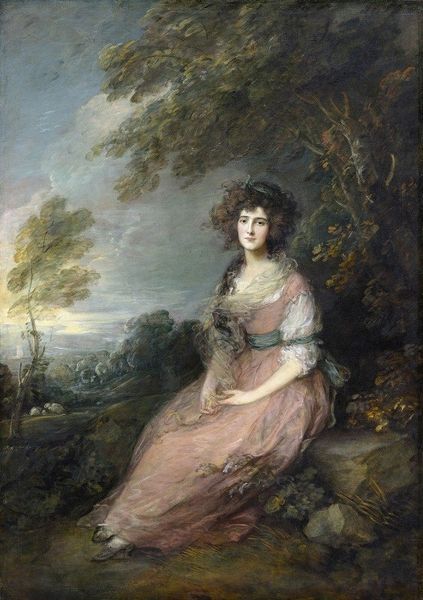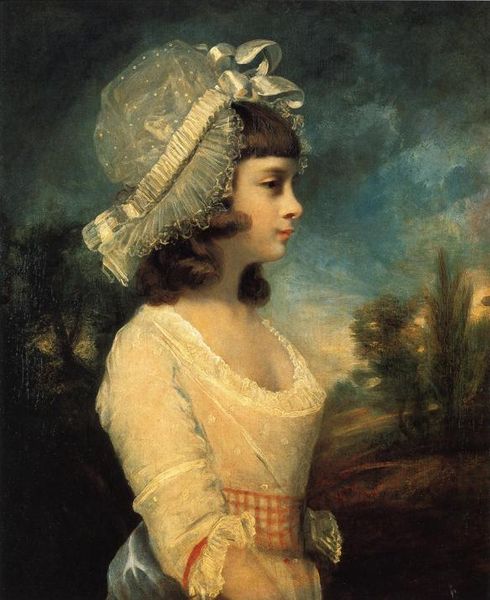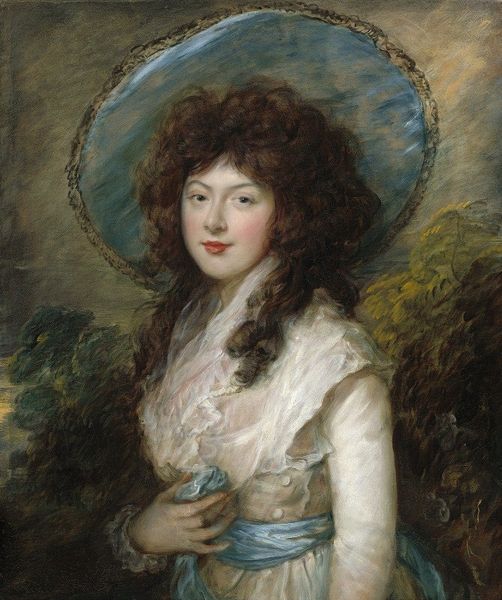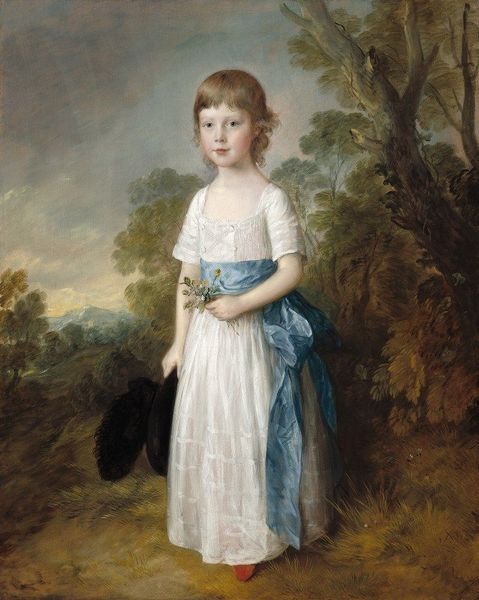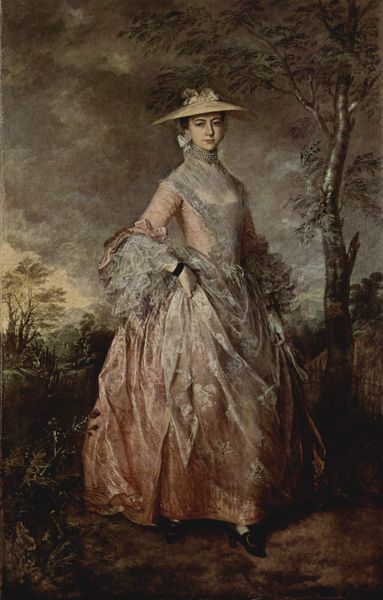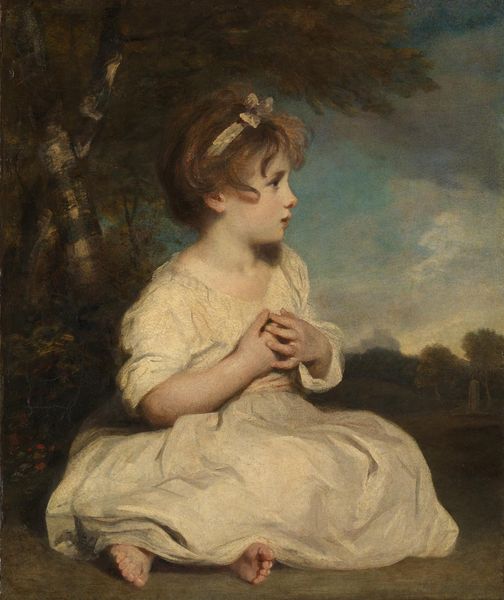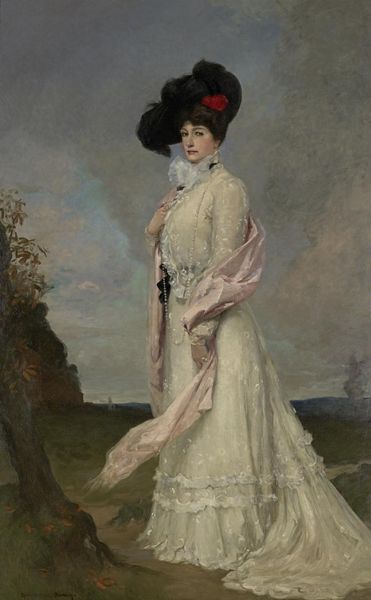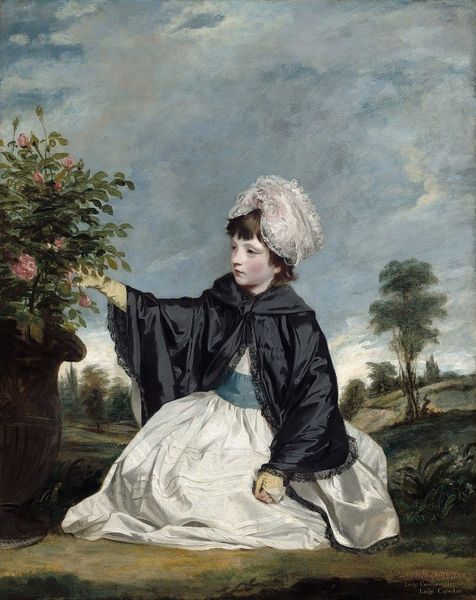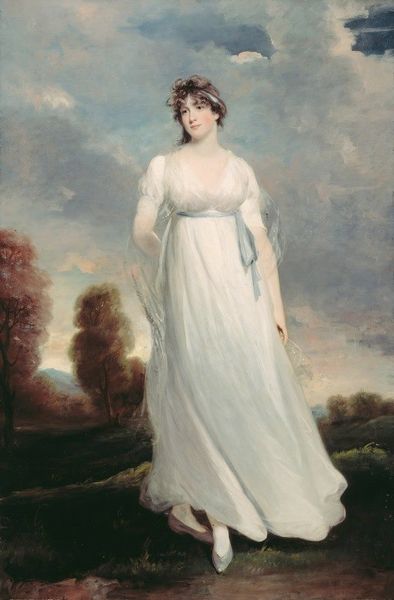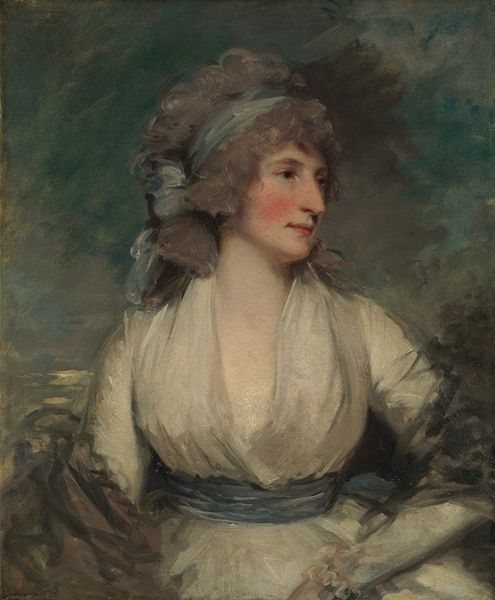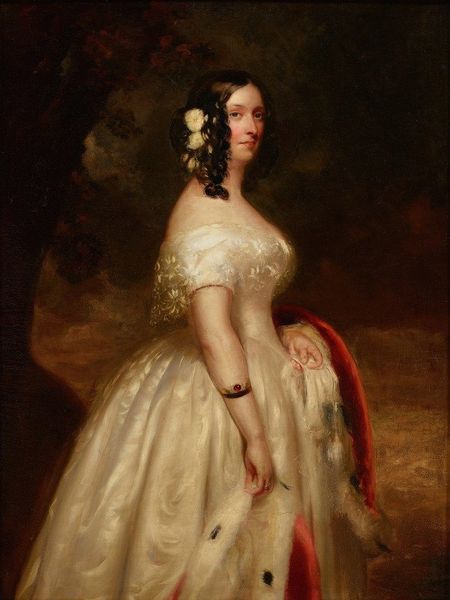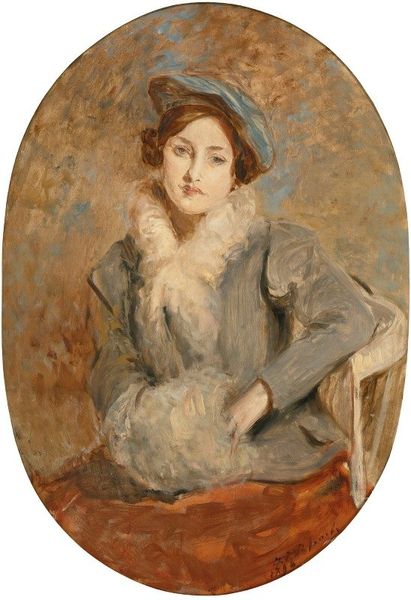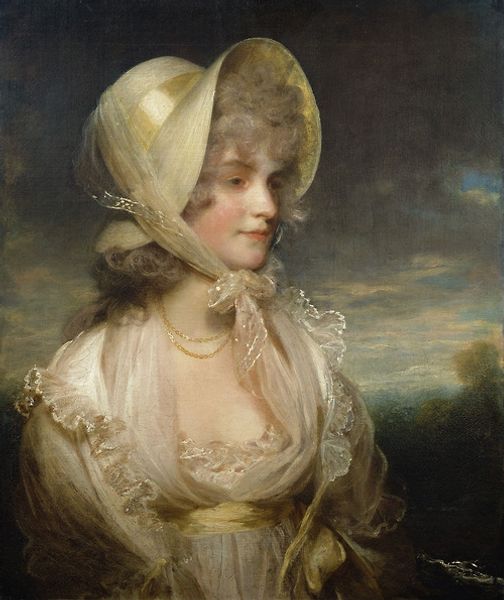
Copyright: Public Domain: Artvee
Editor: This is "Miss Elizabeth Haverfield," an oil painting from the early 1780s by Thomas Gainsborough. It has this delicate, almost ethereal quality to it. What jumps out to you, in terms of its deeper meaning? Curator: I’m struck by how Gainsborough uses the symbolic language of nature. Notice how Miss Haverfield is positioned amidst the flora. Flowers, particularly in portraits, carry immense weight. They're never just decorative. Do you get any sense of what those specific blooms near her could signify? Editor: I hadn't considered that. They're sort of delicate, with muted colours… innocence, maybe? Curator: Precisely. The choice of surrounding her with specific botanical imagery reinforces a vision of purity, youth, and a connection to the natural world. And her hat? Editor: It looks rather ornate, with so many ribbons, it is competing with the simplicity of the flowers, actually. Curator: Absolutely! The contrast embodies the duality of her position in society – both natural and cultivated. She is both a part of nature, yet also a symbol of social status, don't you think? Do you find any contemporary resonances in this contrast? Editor: Definitely! It makes me think of the tensions women face today, between expectations and authenticity. So, her gaze, the flowers, the clothing - it's all part of a language that creates this incredibly nuanced image. Curator: Indeed. Gainsborough wasn’t just painting a likeness; he was constructing a symbolic representation of femininity, innocence, and social identity that continues to resonate across centuries. Editor: I never thought a portrait could contain so much hidden language. I'll never look at another painting the same way again. Curator: That is exactly how the magic of symbolism works. Once noticed, it's everywhere.
Comments
No comments
Be the first to comment and join the conversation on the ultimate creative platform.
